When Nomos unveiled the Metro at last year’s Basel World, it was met with such adoration from both the press and watch enthusiasts that it must have made all of the other brands feel put out. Not only did this deceptively simple and all together quirky little watch get praised for its slightly odd design, it was also the harbinger of Nomos’ independence from the Swiss. As Mark eloquently explained back in March of 2014, with the Metro, Nomos also unveiled their Swing System; their in-house escapement.
The most costly and complicated part of the movement (barring additional complications), the escapement includes the balance, balance spring, escape wheel and pallet, and has no room for error. One might assume that all brands that claim to have in-house movements would all have their own version, but it’s actually something few brands have the capacity to make, especially the balance spring. For a relatively young and, at least in the US, small brand to make their own is a massive deal… Compound that with Nomos’ relatively affordable prices, unique designs and superb finishing and you have a recipe for something incredible.
Slowly but surely, Nomos will be converting all of their movements to use their Swing System, which is marked by a change in naming style from Greek letters (alpha, beta, etc…) to DUW (Deutsche Uhrenwerke) plus a serial. While the naming convention might have taken a step into the generic the idea of celebrating German manufacture is clear and understandable. The first watches to use the new naming were actually in their luxury series ($20K +), the Lambda and Lux, and were named the DUW 1001 and DUW 2002, both of which feature extensive finishing, gold Chatons (screwed in jewel holders) and 84 hour power reserves, though oddly, not their Swing System. As such, the Metro, which is powered by the DUW 4401, debuted their full in-house movement.
And, as said before and will likely be repeated like a mantra throughout this review, the Metro was quite a unique place to start. It’s a concept that uses simple elements to make a striking and almost disorienting design. It’s immediately appealing, yet slightly off in ways that are hard to describe and, more importantly, interesting. It has an awkwardness that is relatable; a subtle tension to it that gives it a personality. In Nomos’ collection, it stands out from the strict, symmetrical designs of its older siblings, the reserved precision of the Orion, the playful elegance of the Club, the classically correct Tangente and Tangomat.
The Metro is a thoroughly modern watch with its own look and feel, a comment that is hard to make about most timepieces. It’s meant to appeal to a new, younger audience of watch collector, one that is less attached to the classical vocabularies of heritage brands. To achieve this break, Nomos did something that few watch brands do… they went outside their walls to an independent industrial designer. Mark Braun, who has a studio based in Berlin, has a portfolio of contemporary furniture, lighting and home accessories. Objects that explore form, color, materiality and playful relationships. The Metro clearly speaks to his style while respecting the feel of Nomos, creating a timepiece that can be widely enjoyed.
As with all Nomos’, the Metro is well-priced for a Glashutte-made watch with a manufacture movement, though it’s by no means inexpensive. At $3,780, it’s in the accessible luxury range. It’s priced quite below other manufacture watches (though frankly there isn’t anything much like this), though it’s a price that will be unobtainable for some. It’s the kind of watch to covet, save up and perhaps sell other watches for… Though it’s not alone in that category (even within Nomos’ own offerings… I’m looking at you Orion 38 Datum) so its eccentric design really needs to grab you.









 Featured Videos
Featured Videos




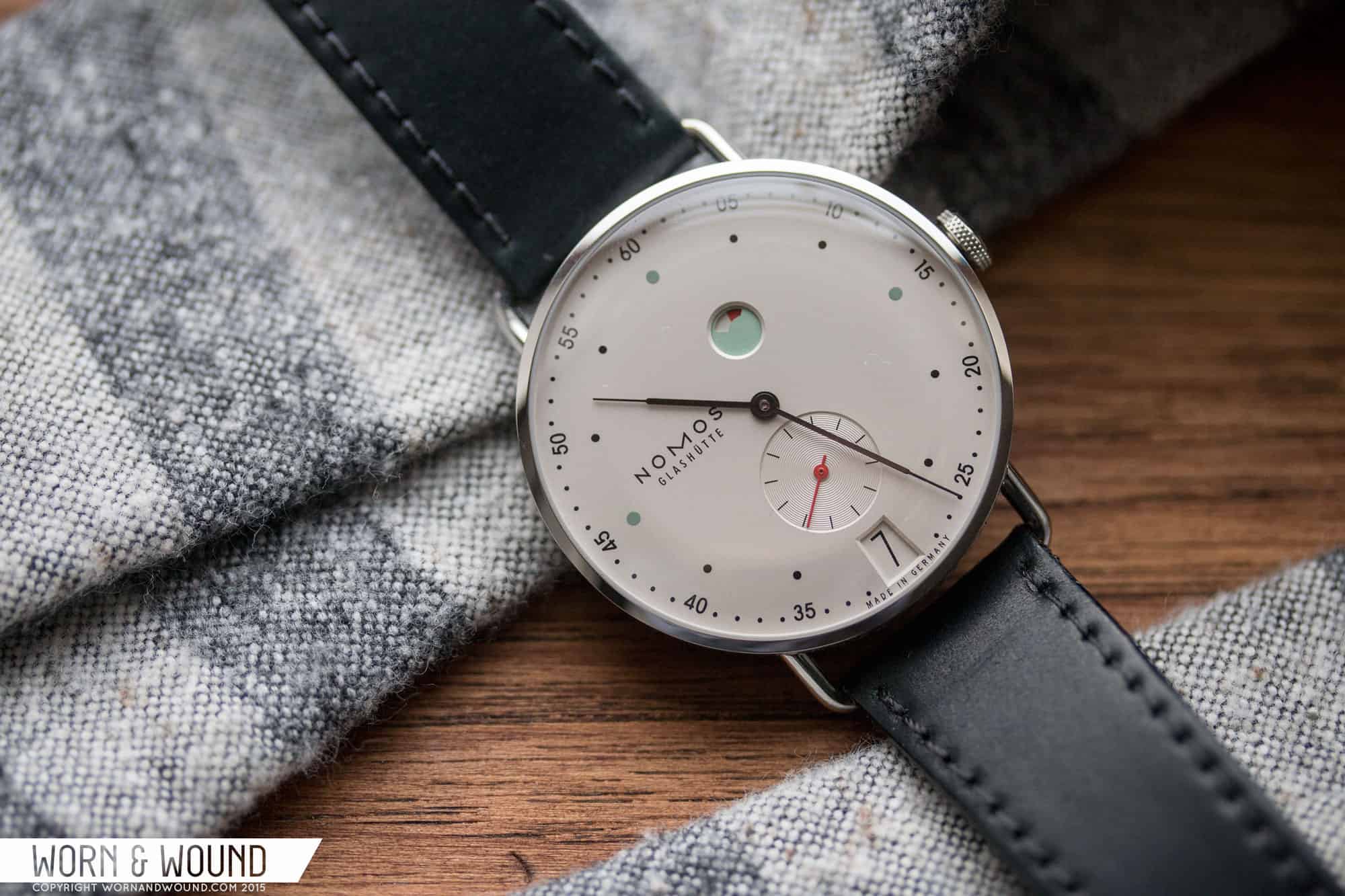
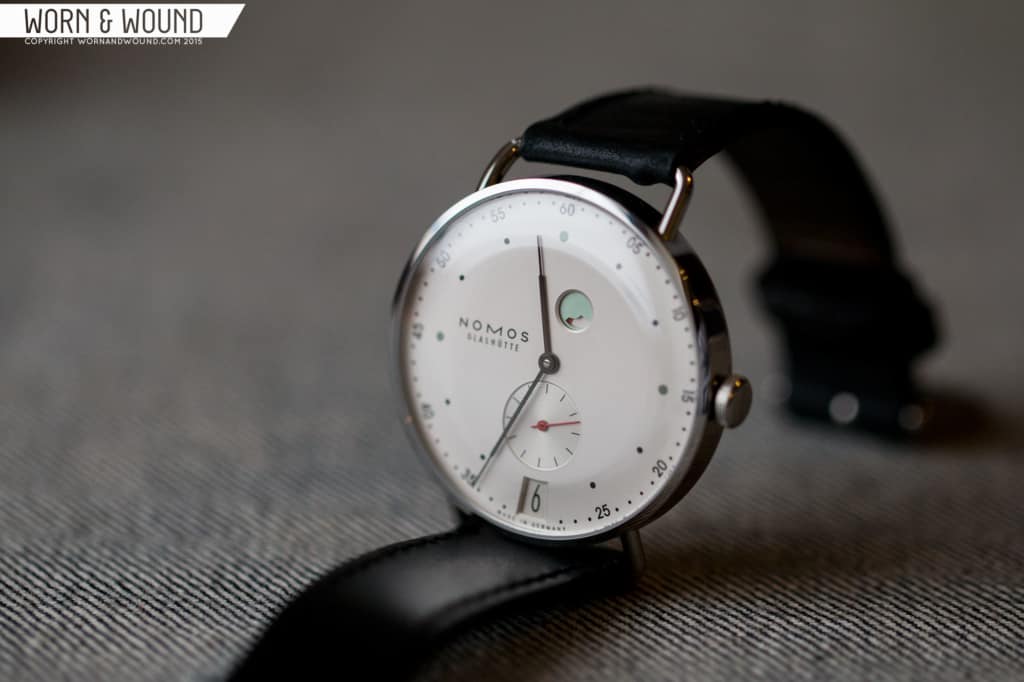


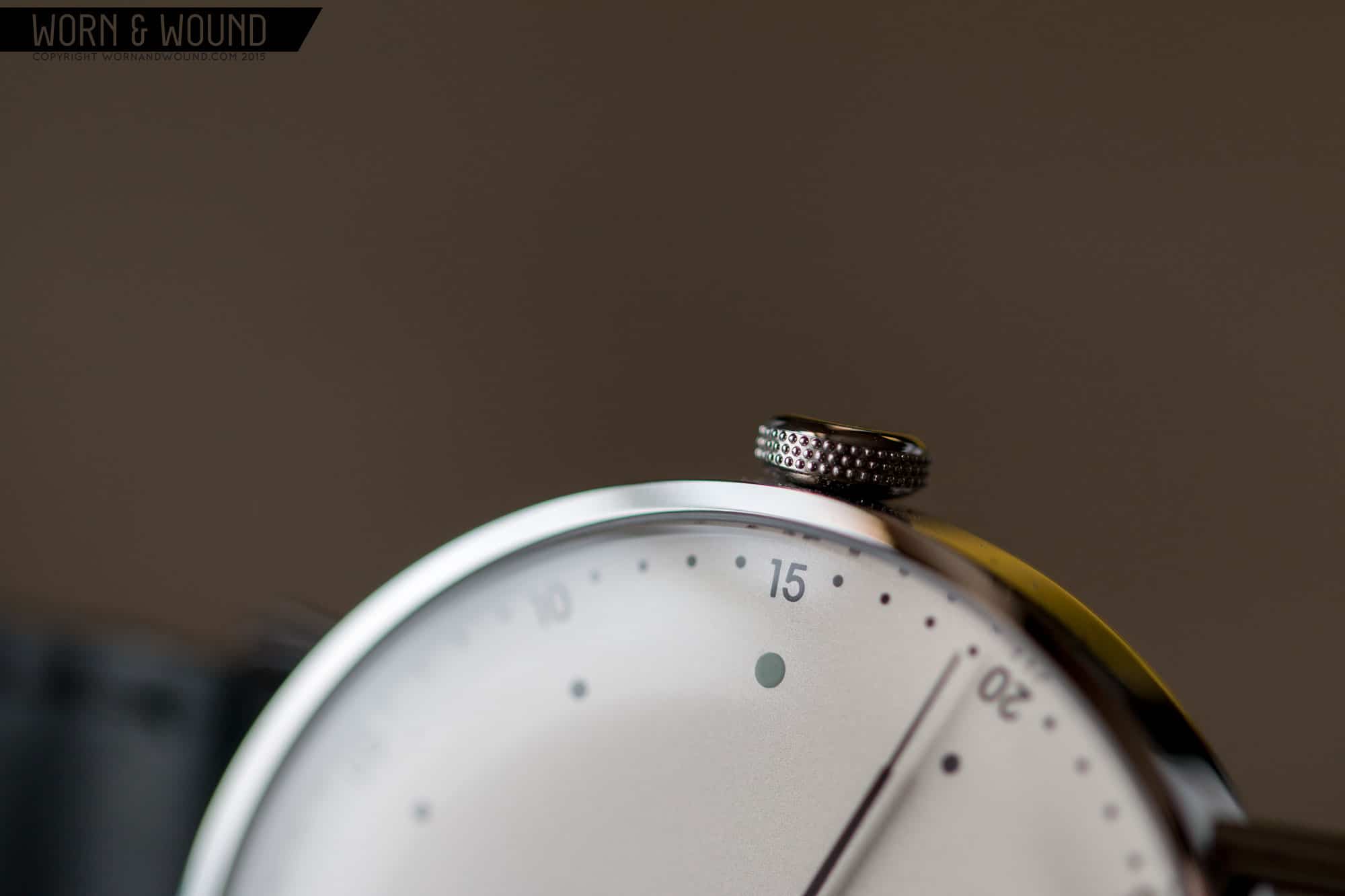
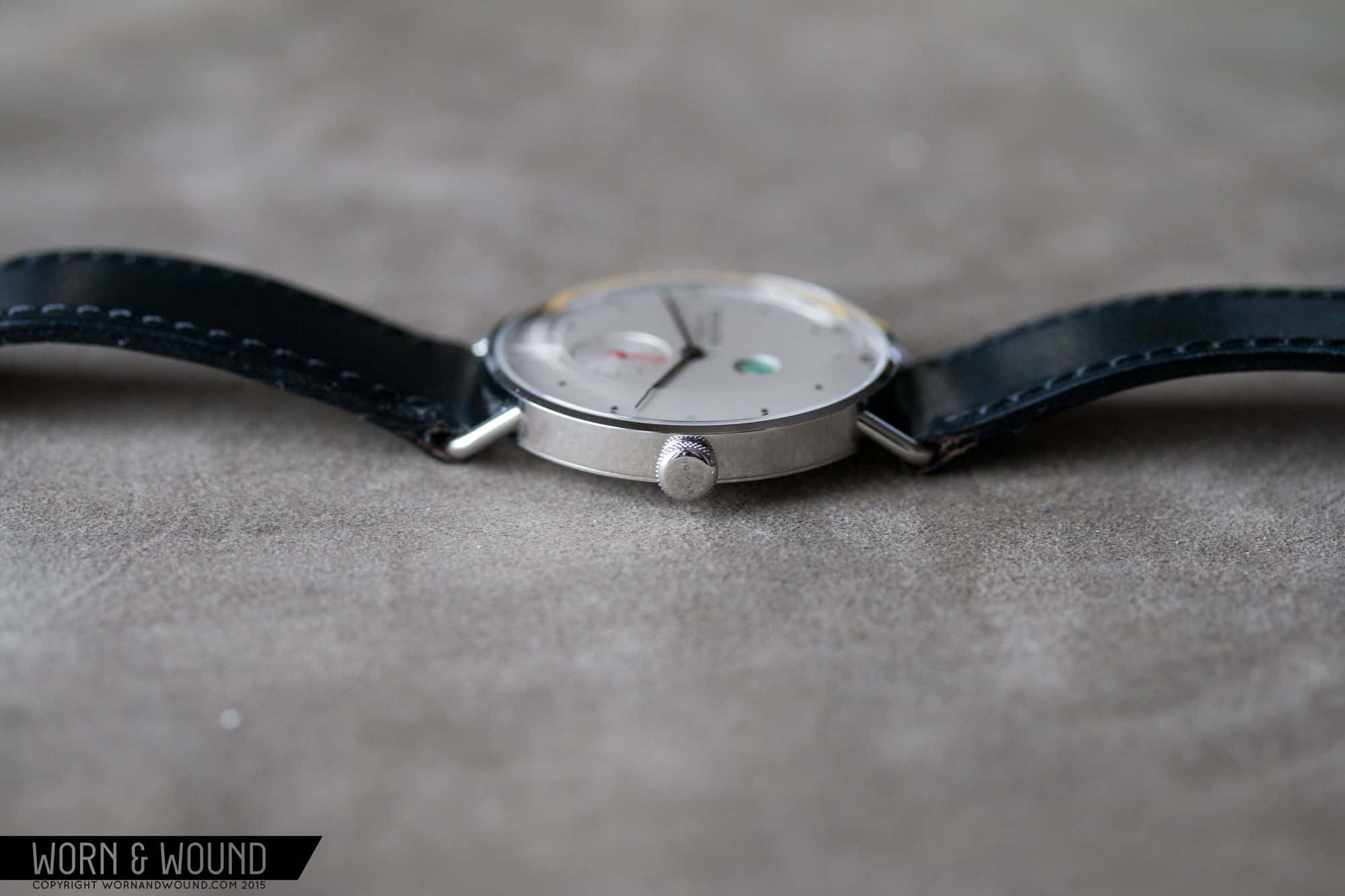
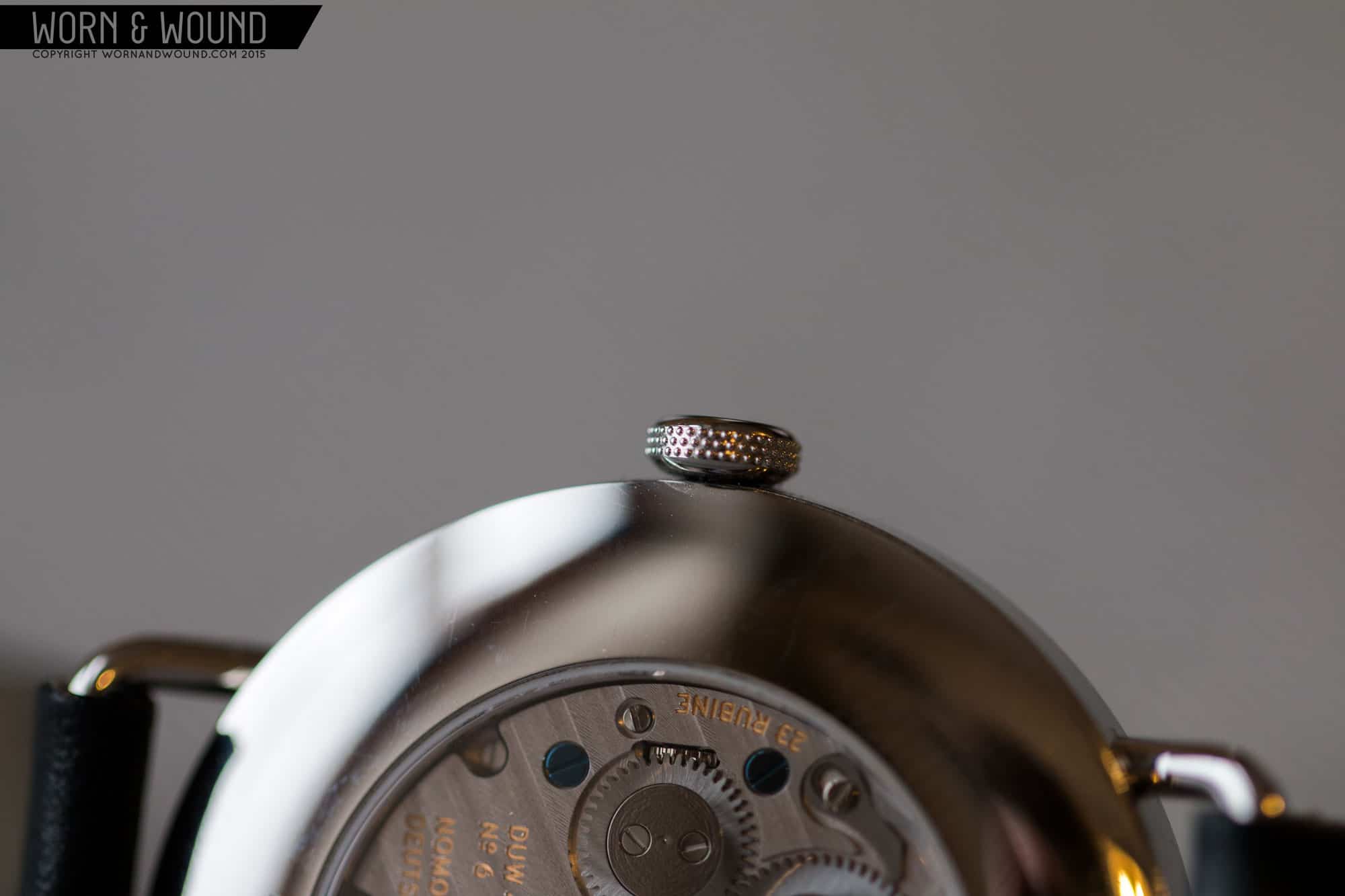
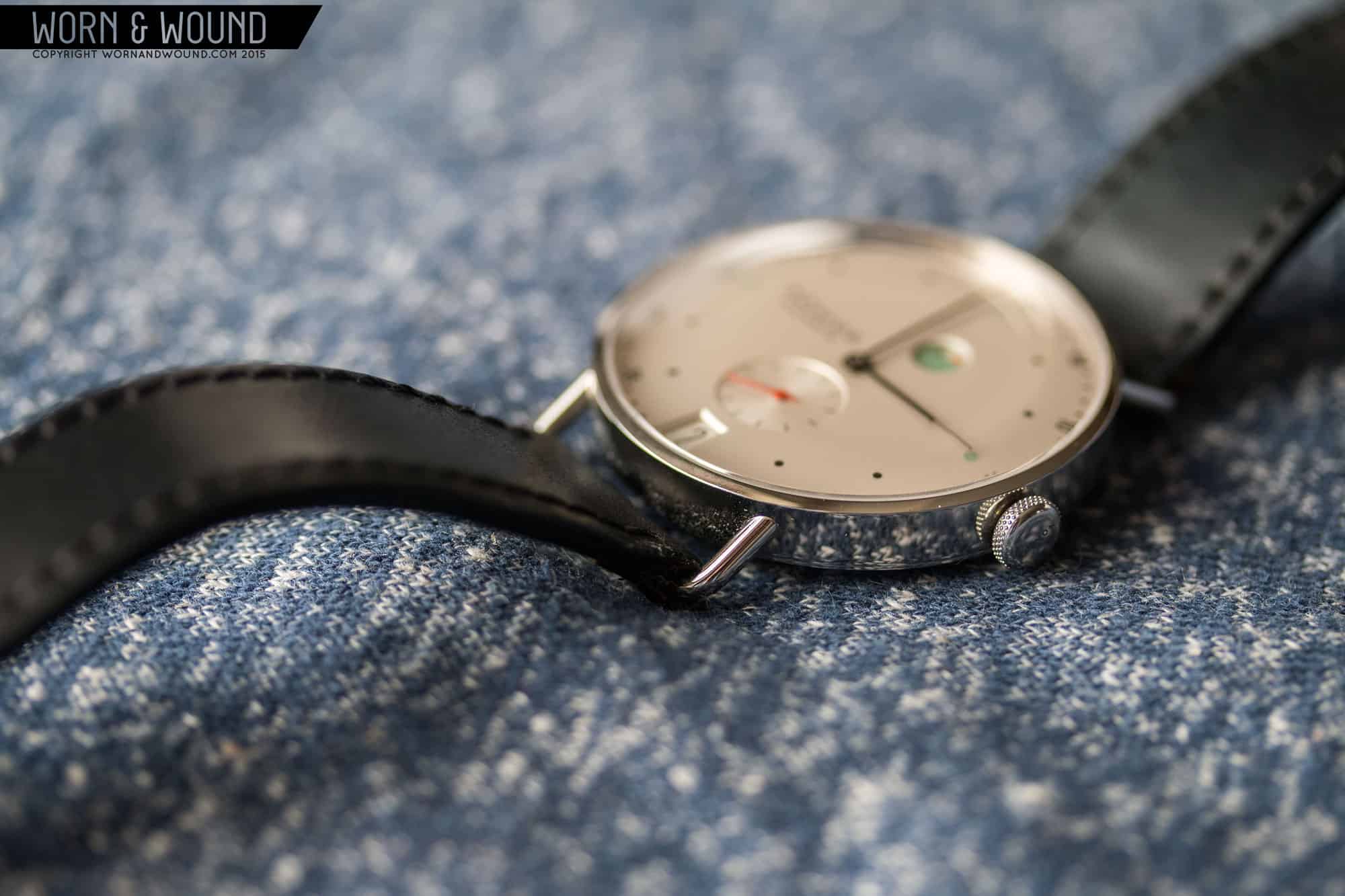
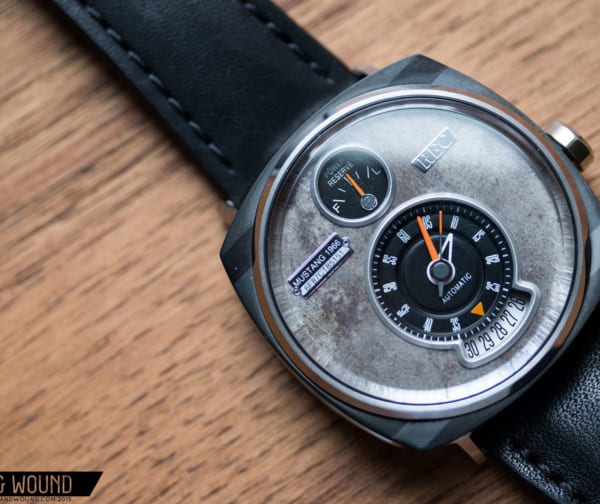
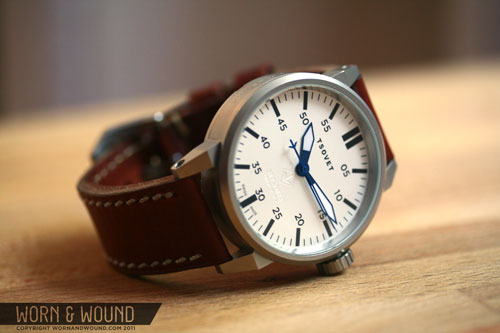
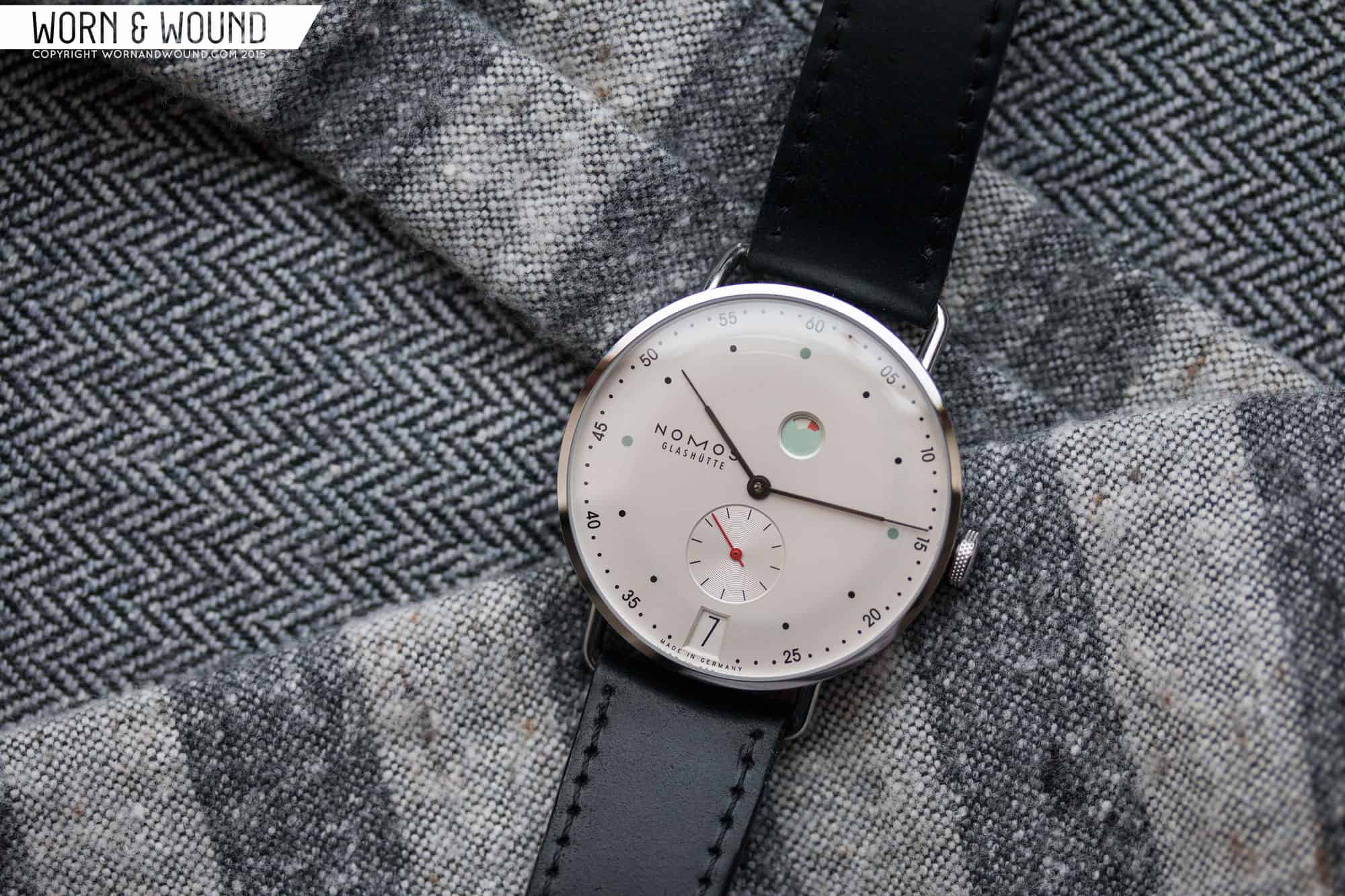


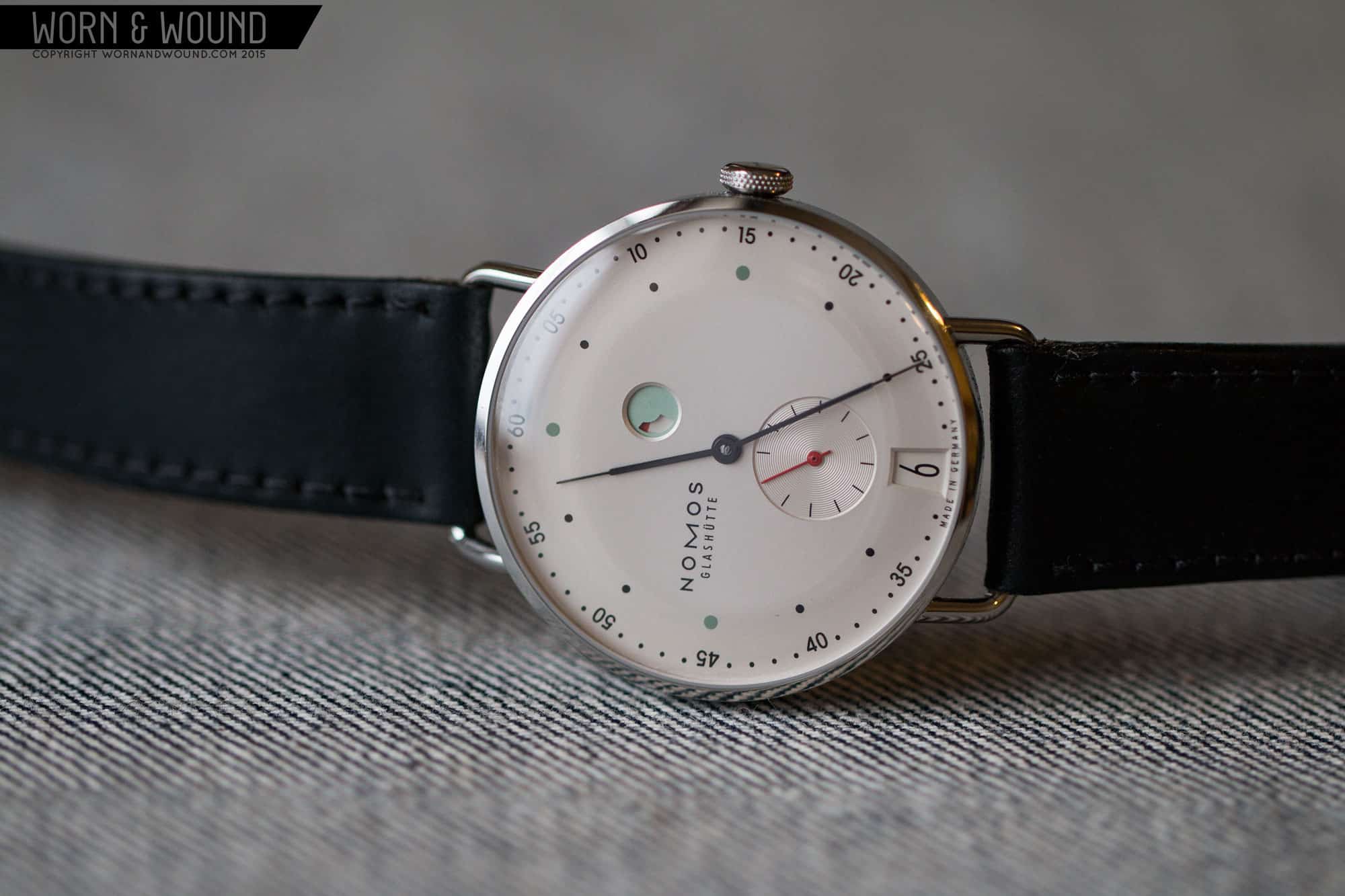
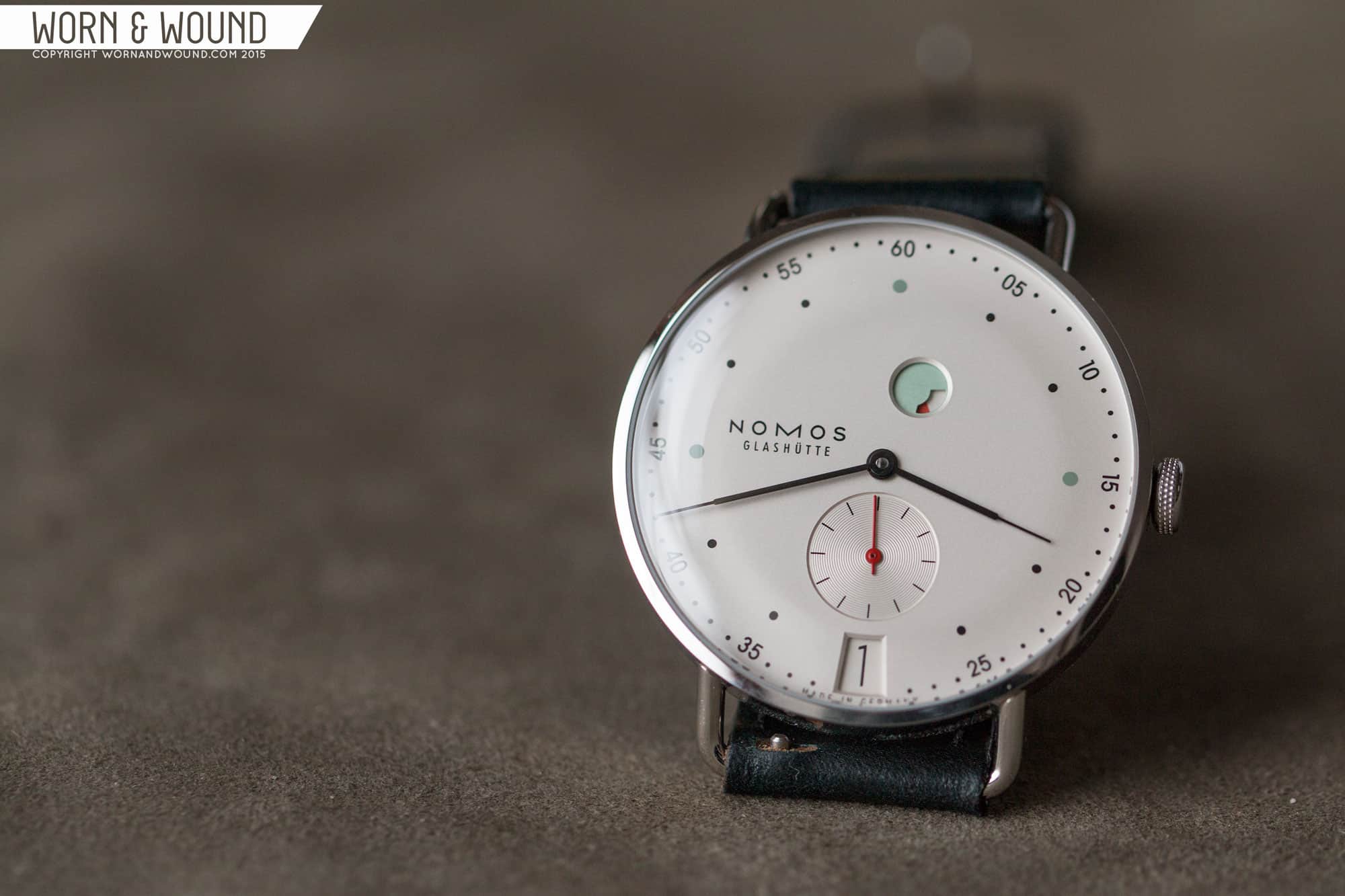
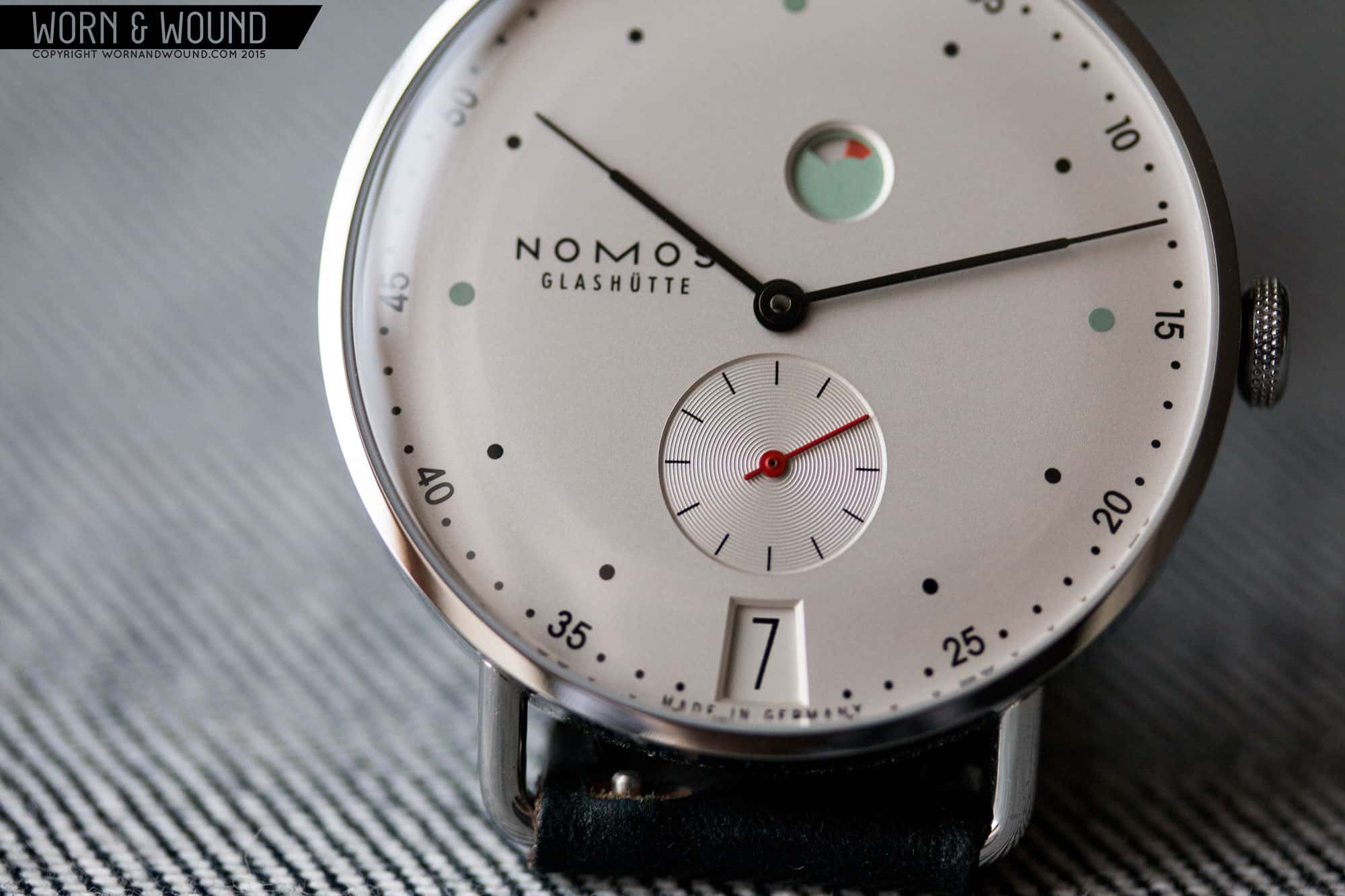






Another great review, Zach! I received my Metro at the beginning of December and I absolutely love it.
appeals to my sense of quirkiness but not my wallet…excellent review Zak as always
Nice review. I think this is fantastic looking watch that is pricing itself out of a large segment of the market. But maybe this is the time to pick up a Nomos. Maybe in 5 years the prices are really astronomical.
The power reserve dial is intriguing me. Does the top surface in the power reserve aperture move clockwise, and the bottom surface have 2 white sections and two red sections, so going from full power to no power twice would make 1 full rotation of the top surface? It’s the only way I can make sense of seeing the various positions in the pictures.
Nomos is a great manufacture. I ordered a “Doctors Without Borders” online & the next day I had a confirmation. Four days later the FedX man was handing me my watch. I have my eyes on another one of their watches.
Excellent review, thanks! As a guy with thicker wrists, does anyone know offhand if Nomos makes longer straps?
They do have large strap options. Check their website.
But if you have large, thick wrists this probably isn’t the best option. It has a very slim profile and presence that is flattering to slim wrists (in a way that chunkier watches often aren’t) but I’ve seen photos of it on thicker wrists and it doesn’t look nearly as good. I have thin girly wrists so I need something slim like this.
You might like to look at some of Nomos larger offerings or other similar brands.
I love the way Nomos design their watches.. Some day…….
Of course Nomos makes larger watches, e.g. the Atlantik and Club Automat Datum, which would, then, be more to your taste.